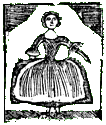“Went in pursuit of these royal pirates”

One fight took place in the waters between Fairhaven and Martha’s Vineyard on 14 May. I wrote about that event starting here, and Derek W. Beck went into more detail in this article.
Today I’ll comment on a couple of sources.
First, Peter Force’s 1833 American Archives included an “Extract of a Letter from Newport, Rhode-Island, dated May 10, 1775” about the action.
That letter described that event as starting “Last Friday,” which is probably why Richard Frothingham writing in the mid-1800s misdated the fight by a week. Naval Documents of the American Revolution reprinted the letter from American Archives with the same date.
However, that passage first appeared in the 26 May Pennsylvania Mercury, and there it’s actually labeled as “Extract of a letter from New-Port, Rhode-Island, May 15,” meaning “Last Friday” was 12 May. That matches up with the other sources. The ship-seizing began on 12 May, and the fighting occurred on 14 May.
Second, here’s the report on the fight from Isaiah Thomas’s Massachusetts Spy, published 24 May in Worcester:
The week before last the Falcon sloop of war, was cruising about Cape-Cod, and meeting with a wood sloop, in ballast, seized her, but promising the skipper to release him and his vessel if he would give information of any vessel that was just arrived from the West-Indies with a cargo on board, he at length told the Captain of the Falcon [John Linzee] that there was a sloop at Dartmouth, which had just arrived;Significantly, the owner of that wood sloop, Simeon Wing, later told Massachusetts authorities that ”an indian Fellow on board” had offered information about the other sloop, not “the skipper”—who was Wing’s son Thomas. Scapegoating a man of color?
whereupon the Captain of the Falcon, instead of releasing the wood sloop, armed and manned her, and sent her in search of the West-Indiaman;Other sources show that the prize crew put onto the wood sloop consisted of Midshipman Richard Lucas (called in some New England sources as mate or lieutenant), surgeon’s mate John Dunkinson, gunner Richard Budd, eight seamen, and three marines.
they found the vessel lying at anchor, but her cargo was landed; however, they seized her and carried her off after putting part of their crew and some guns and ammunition on board.Massachusetts Provincial Congress documents preserved the names of the two wounded seamen as Jonathan Lee and Robert Caddy.
Notice of this getting on shore, the people fitted out a third sloop, with about 30 men and two swivel guns, and went in pursuit of these royal pirates, whom they come up with at Martha’s Vineyard, where they lay at anchor at about a league’s distance from each other; the first surrendered without firing a gun, our people after putting a number of hands on board, bore down upon the other, which by this time had got under sail, but the people in the Dartmouth sloop coming up with her, the pirates fired upon them; the fire was immediately returned, by which three of the pirates were wounded, among whom was the commanding officer;
our people boarded her immediately, and having retaken both sloops, carried them into Dartmouth, and sent the prisoners to Cambridge, from thence nine of them were yesterday brought to this town.Other newspapers say those prisoners of war were sent to the jail in Taunton, but that might have been only overnight. Authorities kept the three wounded men in Dartmouth along with the surgeon’s mate “to dress their wounds.”
Capt. Linzee never recorded losing the wood sloop and his prize crew in the log of the Falcon. But according to a report out of New York, he later told a passing ship’s captain that he understood Midn. Lucas had “lost an arm.” Locals involved in the fracas, quoted here, recalled that Lucas was wounded in the head with buckshot and recovered.
The 15 May letter from Newport printed in Pennsylvania Mercury (cited above) said one of the wounded men was “since dead.” That appears to have been another false rumor since follow-up newspaper stories and government sources don’t mention any dead at all.
After the actual fighting there were protracted disputes on the provincial side. What to do with the prisoners? What to do with the ships? I discussed those debates back here.


